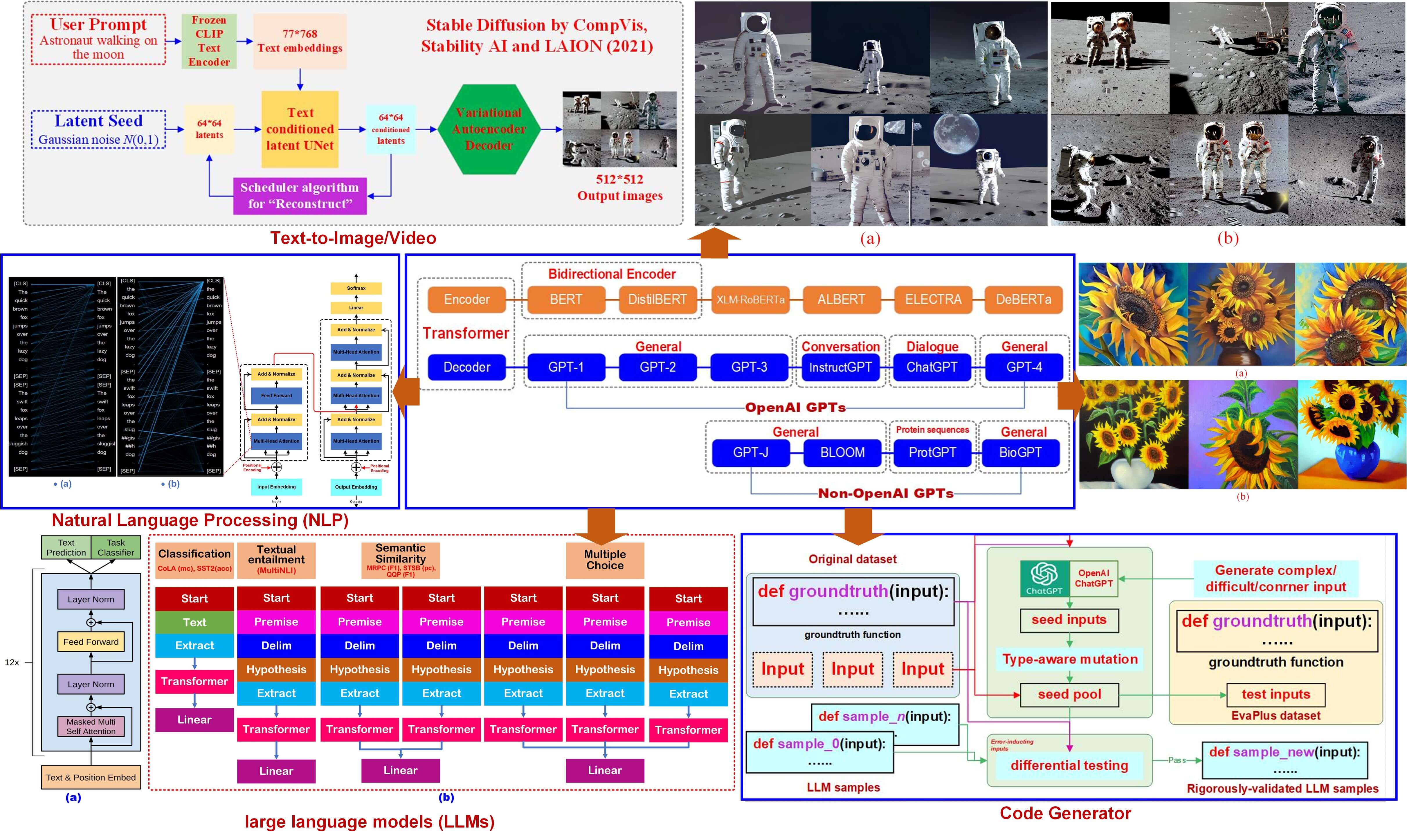 Open Access
Open Access
REVIEW
Exploring the Latest Applications of OpenAI and ChatGPT: An In-Depth Survey
1 School of Electrical Information Engineering, Jiangsu University of Technology, Changzhou, 213001, China
2 Department of Electrical and Computer Engineering, University of Nevada, Las Vegas, 89154, USA
* Corresponding Author: Hong Zhang. Email:
Computer Modeling in Engineering & Sciences 2024, 138(3), 2061-2102. https://doi.org/10.32604/cmes.2023.030649
Received 18 April 2023; Accepted 26 July 2023; Issue published 15 December 2023
Abstract
OpenAI and ChatGPT, as state-of-the-art language models driven by cutting-edge artificial intelligence technology, have gained widespread adoption across diverse industries. In the realm of computer vision, these models have been employed for intricate tasks including object recognition, image generation, and image processing, leveraging their advanced capabilities to fuel transformative breakthroughs. Within the gaming industry, they have found utility in crafting virtual characters and generating plots and dialogues, thereby enabling immersive and interactive player experiences. Furthermore, these models have been harnessed in the realm of medical diagnosis, providing invaluable insights and support to healthcare professionals in the realm of disease detection. The principal objective of this paper is to offer a comprehensive overview of OpenAI, OpenAI Gym, ChatGPT, DALL E, stable diffusion, the pre-trained clip model, and other pertinent models in various domains, encompassing CLIP Text-to-Image, education, medical imaging, computer vision, social influence, natural language processing, software development, coding assistance, and Chatbot, among others. Particular emphasis will be placed on comparative analysis and examination of popular text-to-image and text-to-video models under diverse stimuli, shedding light on the current research landscape, emerging trends, and existing challenges within the domains of OpenAI and ChatGPT. Through a rigorous literature review, this paper aims to deliver a professional and insightful overview of the advancements, potentials, and limitations of these pioneering language models.Graphic Abstract

Keywords
Cite This Article
 Copyright © 2024 The Author(s). Published by Tech Science Press.
Copyright © 2024 The Author(s). Published by Tech Science Press.This work is licensed under a Creative Commons Attribution 4.0 International License , which permits unrestricted use, distribution, and reproduction in any medium, provided the original work is properly cited.


 Submit a Paper
Submit a Paper Propose a Special lssue
Propose a Special lssue View Full Text
View Full Text Download PDF
Download PDF Downloads
Downloads
 Citation Tools
Citation Tools
